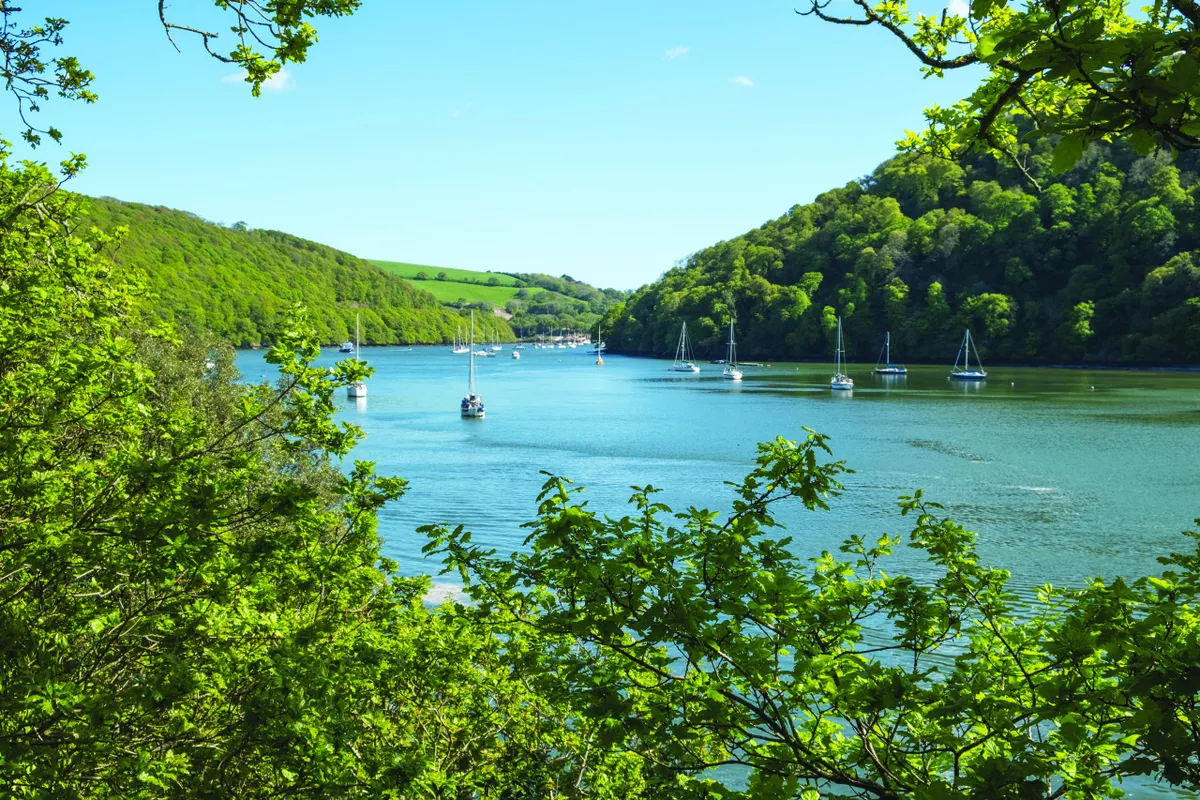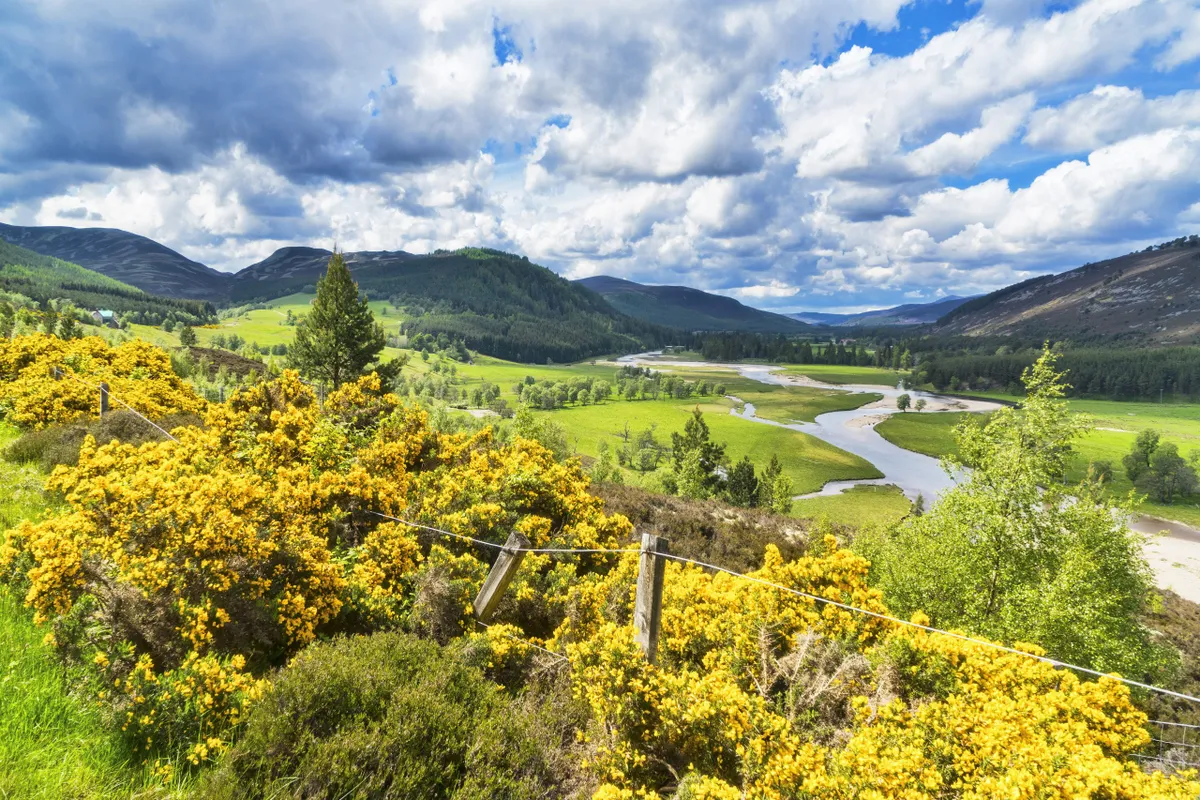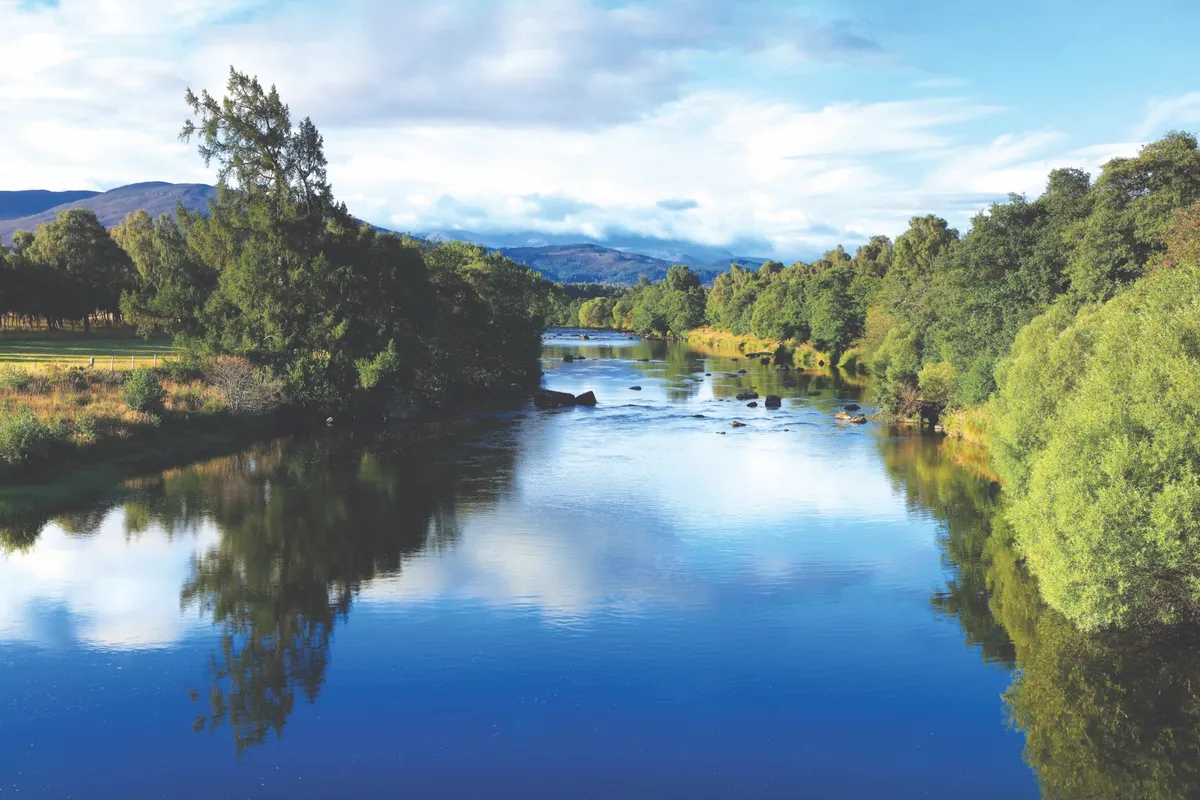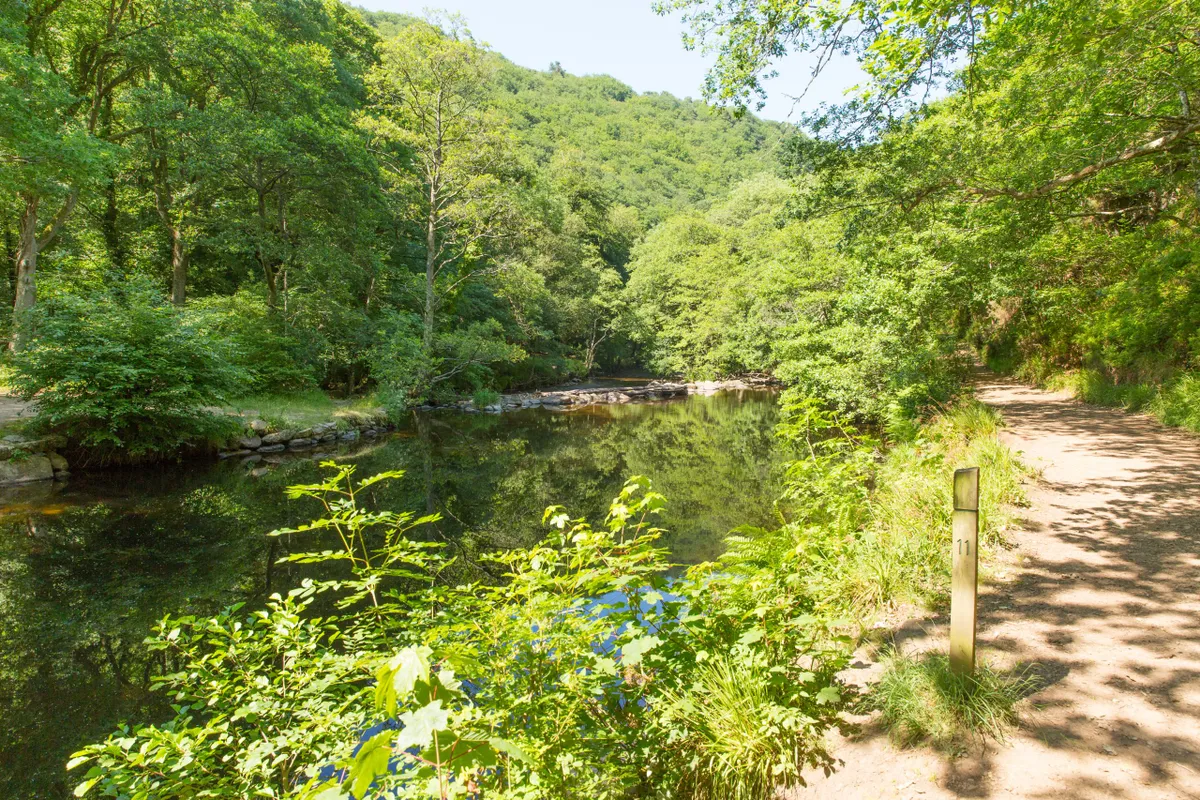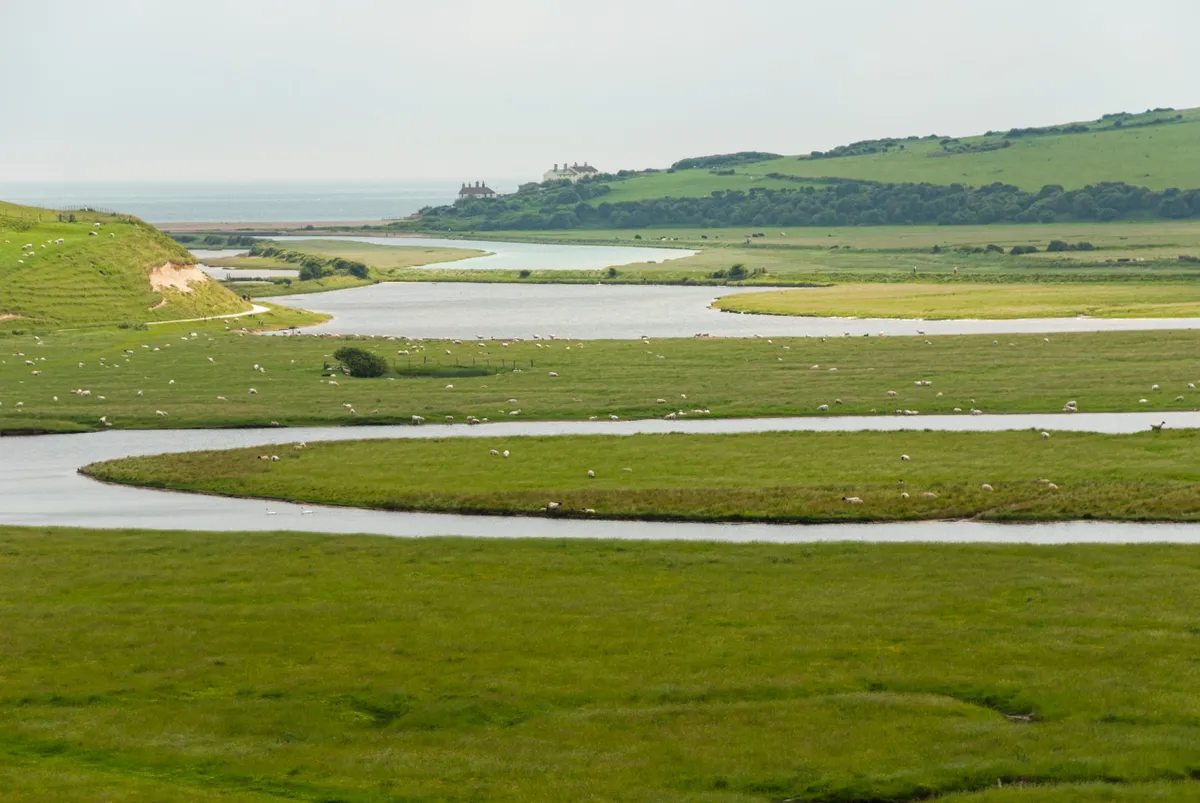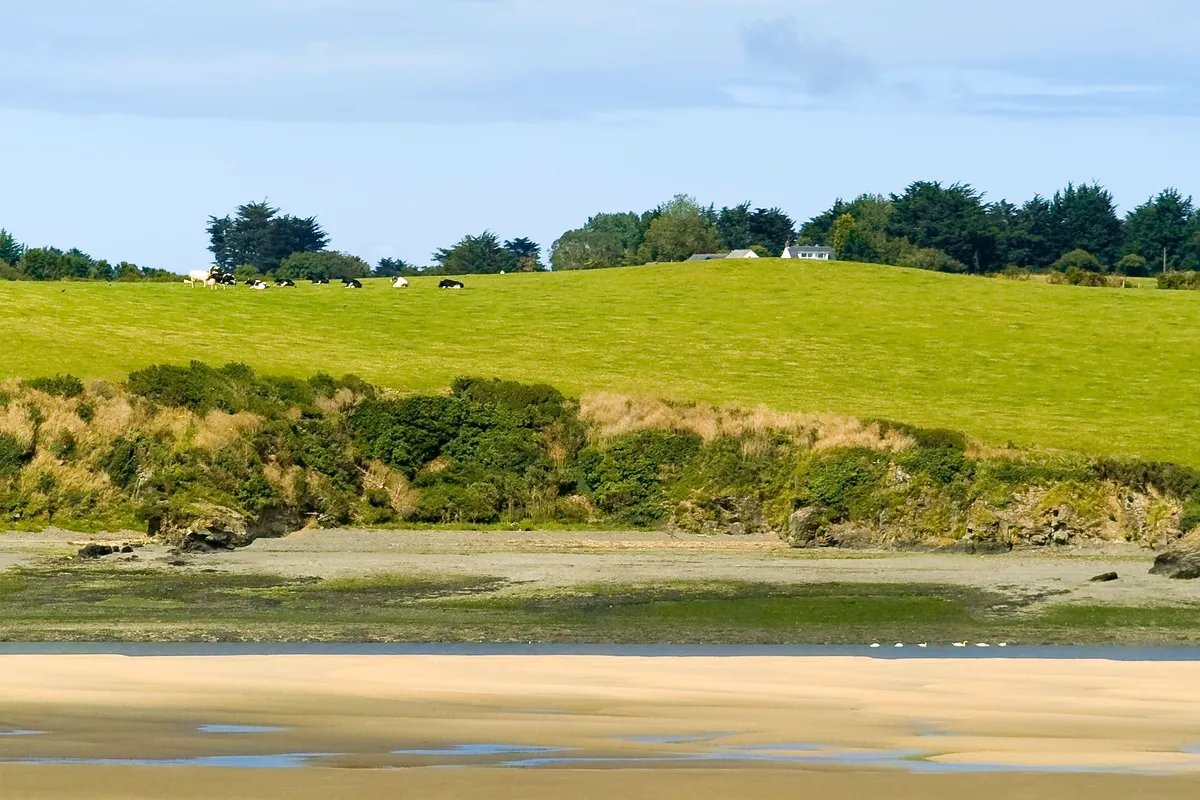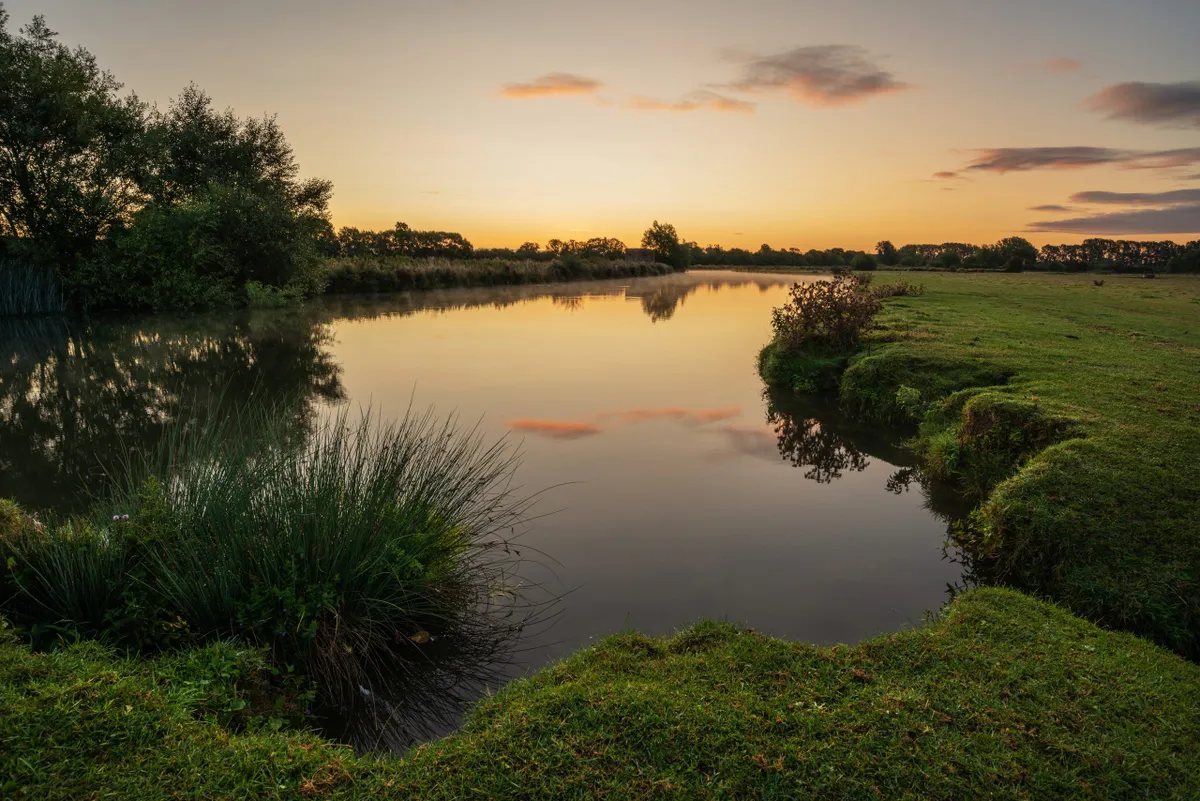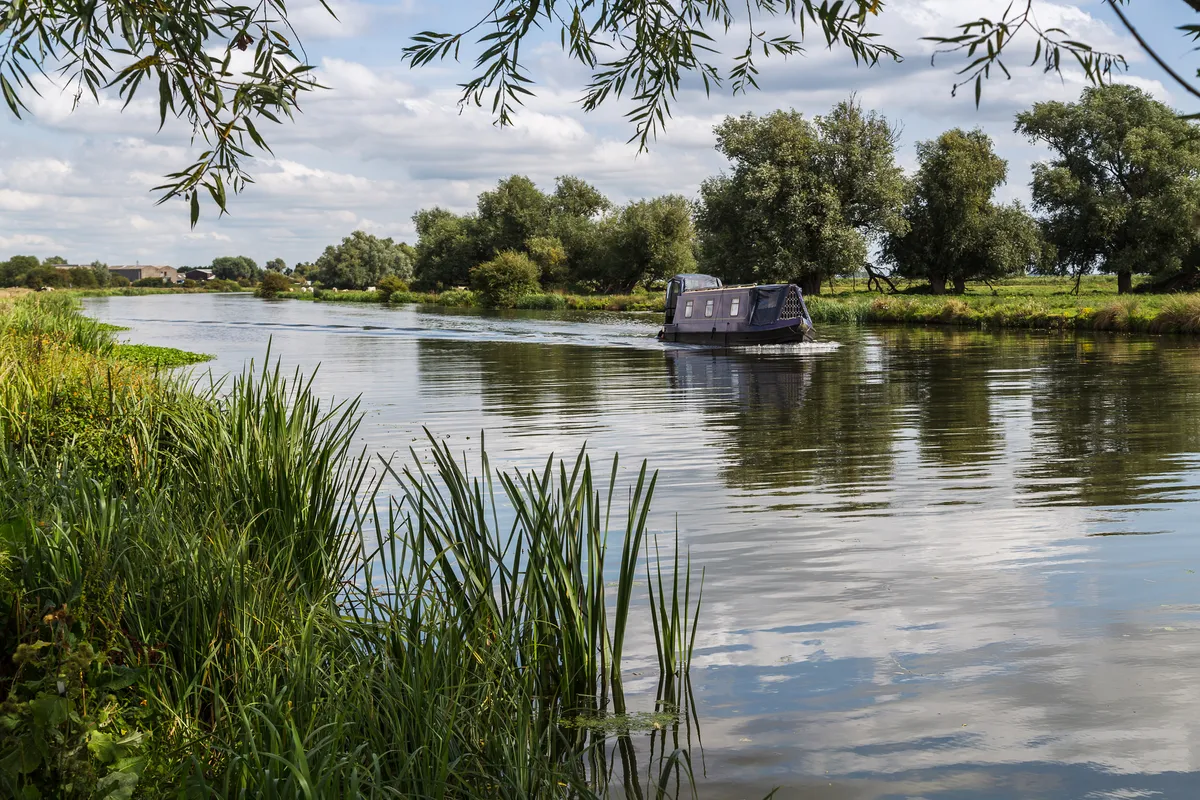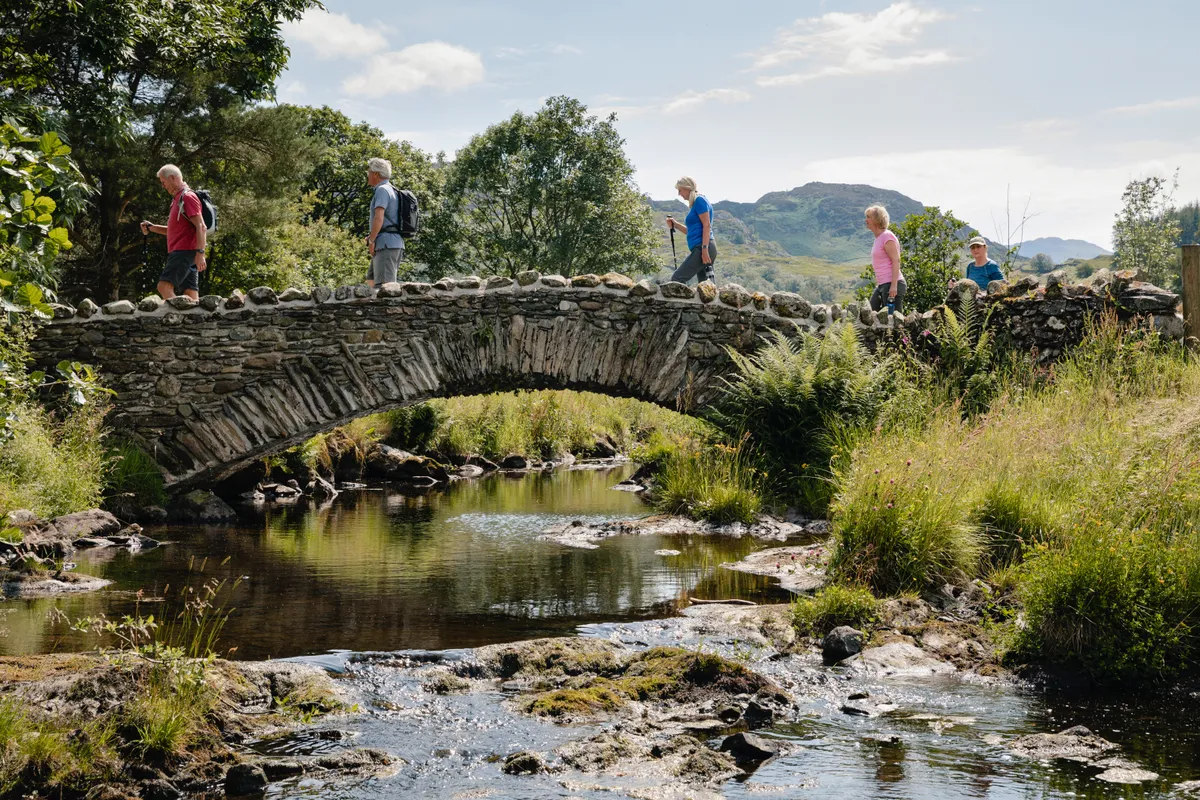For those of us who love the outdoors, visits to the countryside, walking in beautiful places and holidaying in the wild outdoors is restricted for the time being due to the Coronavirus crisis.
We at BBC Countryfile Magazine have always shared wonderful wildlife stories and beautiful landscapes, and will continue to do so with our virtual escapes. So sit back and relax from the comfort of your home and get your fix of the great outdoors even if you can’t physically be there.
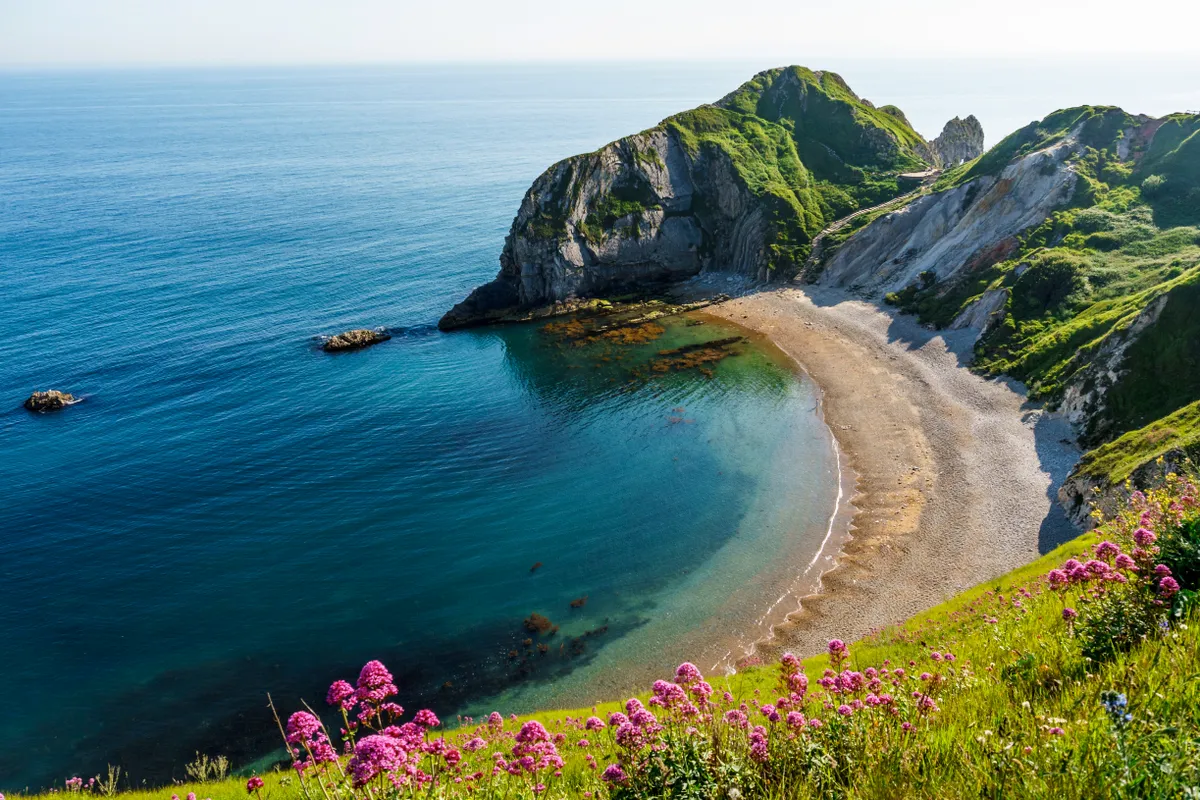
Experience peaceful rivers and rambling streams with our virtual guide to some of Britain’s most magical waterways.
River Shimna, County Down
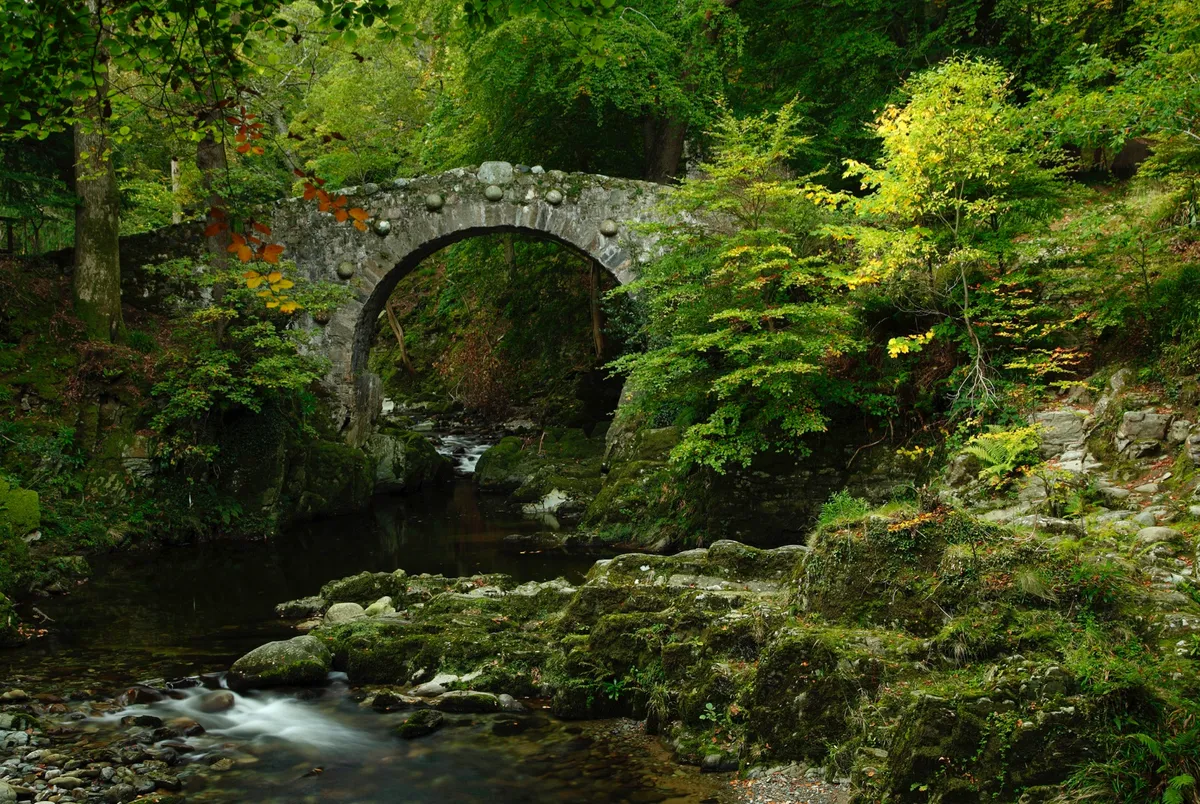
The River Shimna rises on the rutted slopes of the Mourne Mountains, gurgling over granite and heather before dropping into the shadowy depths of Tollymore Forest.
Verdant leaves cling to the ashen trunks of deciduous trees, complemented by majestic evergreens and low-lying reefs of mosses, liverworts and feathery ferns. The forest’s saturation and decay are palpable.
The slopes around the Shimna River are home to a remarkable number of tree species, including oak, beech, ash, birch, larch, Sitka spruce, yew and willow. Field maple, Himalayan cedar, eucalyptus, Douglas fir, Monterey pines, monkey puzzle and giant redwoods can also be found.
Roe deer rustle through the forest’s detritus, and kingfishers, with their short, sharp whistles, perch on branches above the riverbank.

River Wye, Monmouthshire, Gloucestershire, Herefordshire
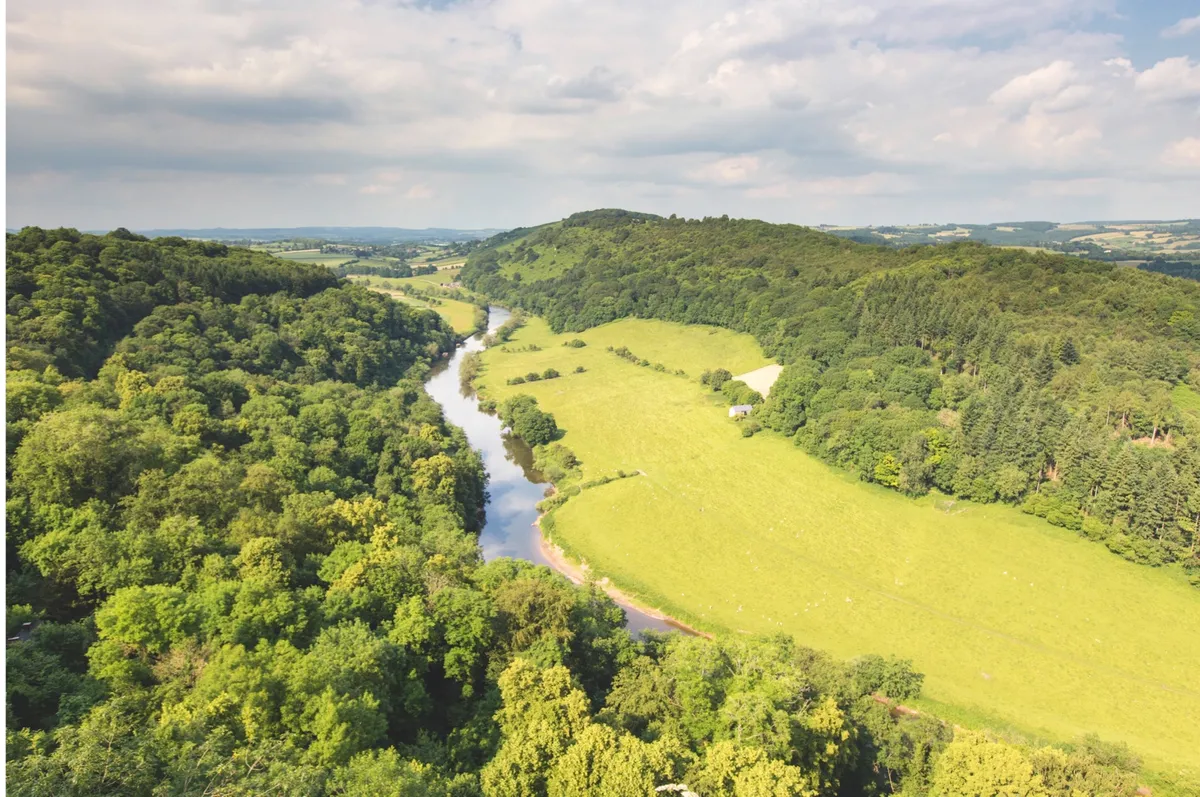
South of its renowned horseshoe loop and Yat Rock, the Wye surges between looming shoulders of limestone into a magnificent wooded chasm.
The cottage-dotted slopes of Symonds Yat give way to yew, ash, beech and lime woods, cascading from fractured cliffs soaring more than 80m above the river, which is over 10m deep in places. Vast towers of dolomite glisten in the sunshine, contrasting with the verdant broadleaf forest. While above the gorge are fabulous viewpoints and tantalising evidence of our distant forefathers.
Birdlife thrives here, joined on occasions by otters, polecats, foraging badgers and timid boars, while deer browse downstream where the cliffs give way to meadows.
Follow the coarse of the River Wye from Biblins Bridge a little downstream from Symonds Yat:
Smardale Gill, Cumbria
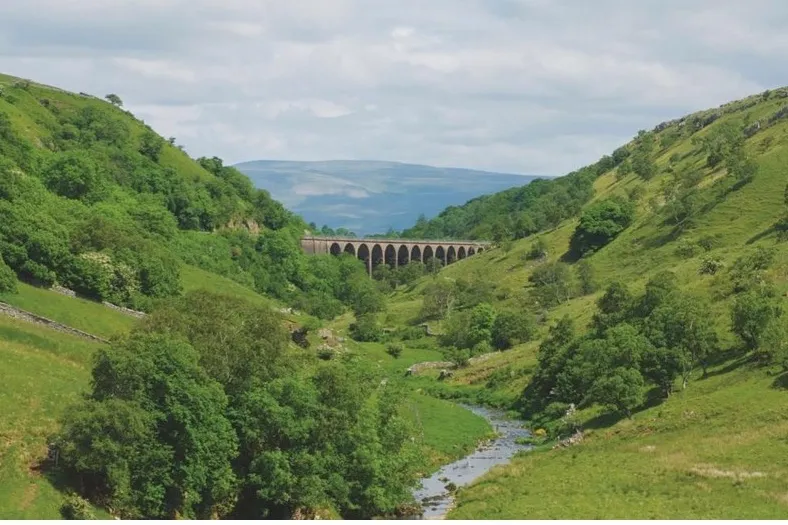
A rivulet gushes from springs high on Wild Boar Fell in the Yorkshire Dales National Park. Surging through quaint, ancient Ravenstonedale village as Scandal Beck, it threads northwards, foaming into a cavernous gorge before joining the River Eden and the Solway Firth below Carlisle.
This magnificent, relatively unknown limestone landscape became a part of the Dales in the 2016 boundary extension. It oozes the character of a time long-gone. Sheep farming keeps the uplands open, tiny villages and hamlets claim the more sheltered locations and wildlife prospers. Wild birds, aquatic denizens and myriad mammals, insects and floral beauties conspire to enhance this natural wonderland, protected, in part, as the Smardale Gill National Nature Reserve.
Wood warblers, pied flycatchers, redstarts and buzzards also share the trees around the water, as well as nuthatches – listen to their song:
River Nene, Northamptonshire
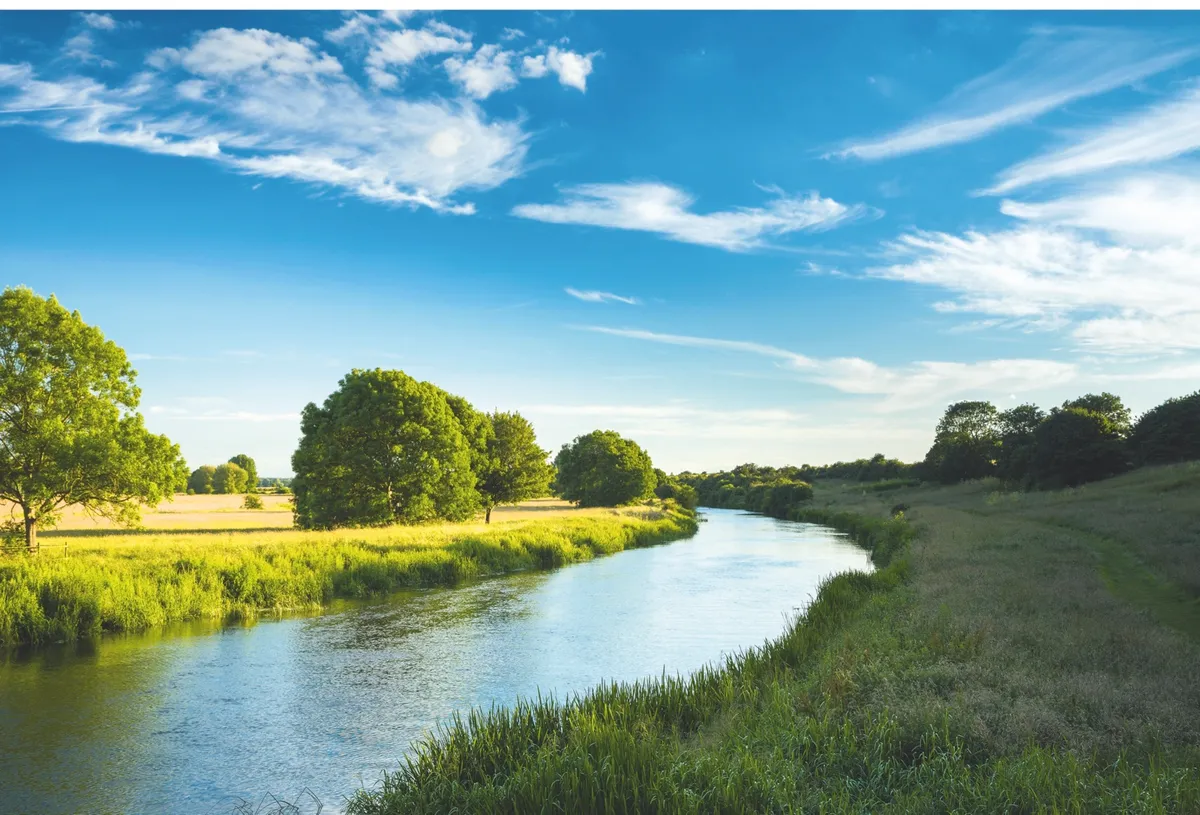
As the River Nene flows through Northamptonshire on its journey to the Wash, it glides past wildlife-rich wetlands, historic mills and a string of fudge-coloured market towns.
In spring and summer, the river is abuzz with brightly coloured dragonflies and butterflies and singing birds. The waterway passes Titchmarsh Nature Reserve, a mosaic of lakes, streams and scrub that nurtures one of Britain’s largest colonies of grey herons – fledged youngsters learn to fish, trailing their legs as they fly overhead.
This is prime habitat for terns, egrets, hobbies and red kites, with large flocks of swallows and martins arriving from April. It's also home to otters – join the Boating Photographer as he goes in search of this elusive mammal:
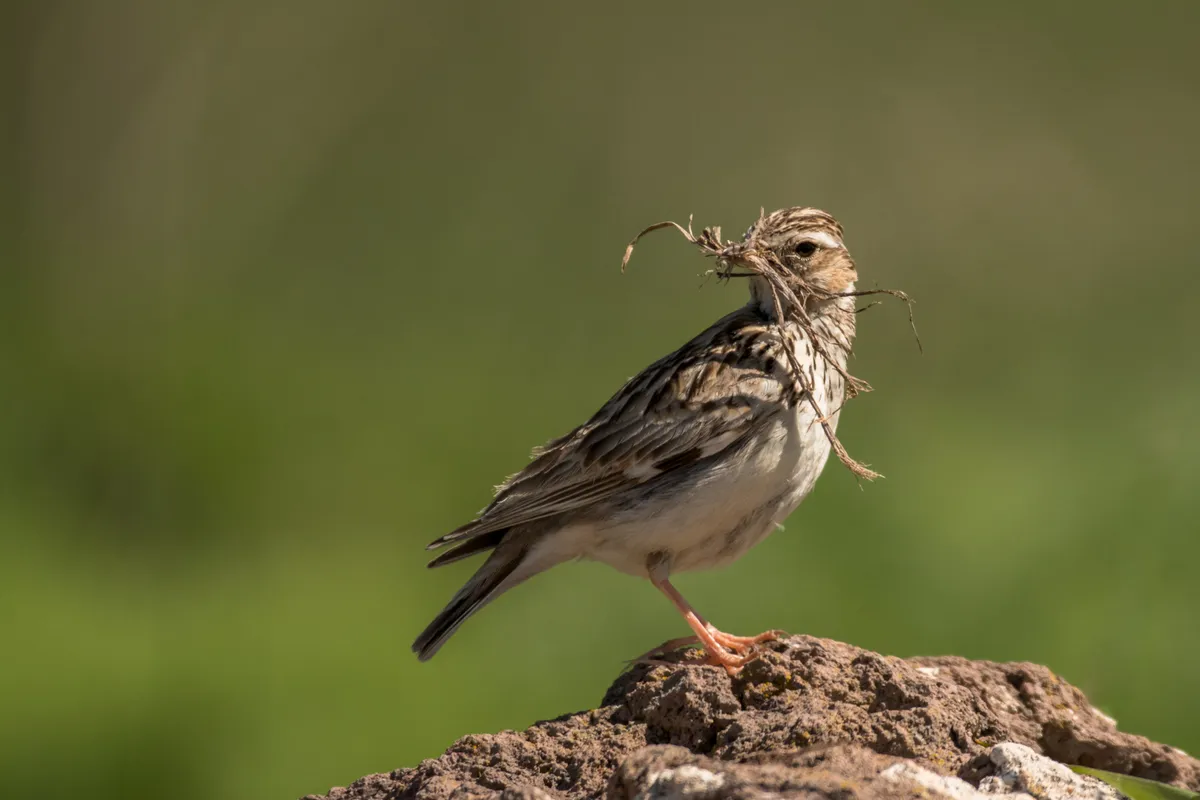
Jesmond Dene, Tyne and Wear
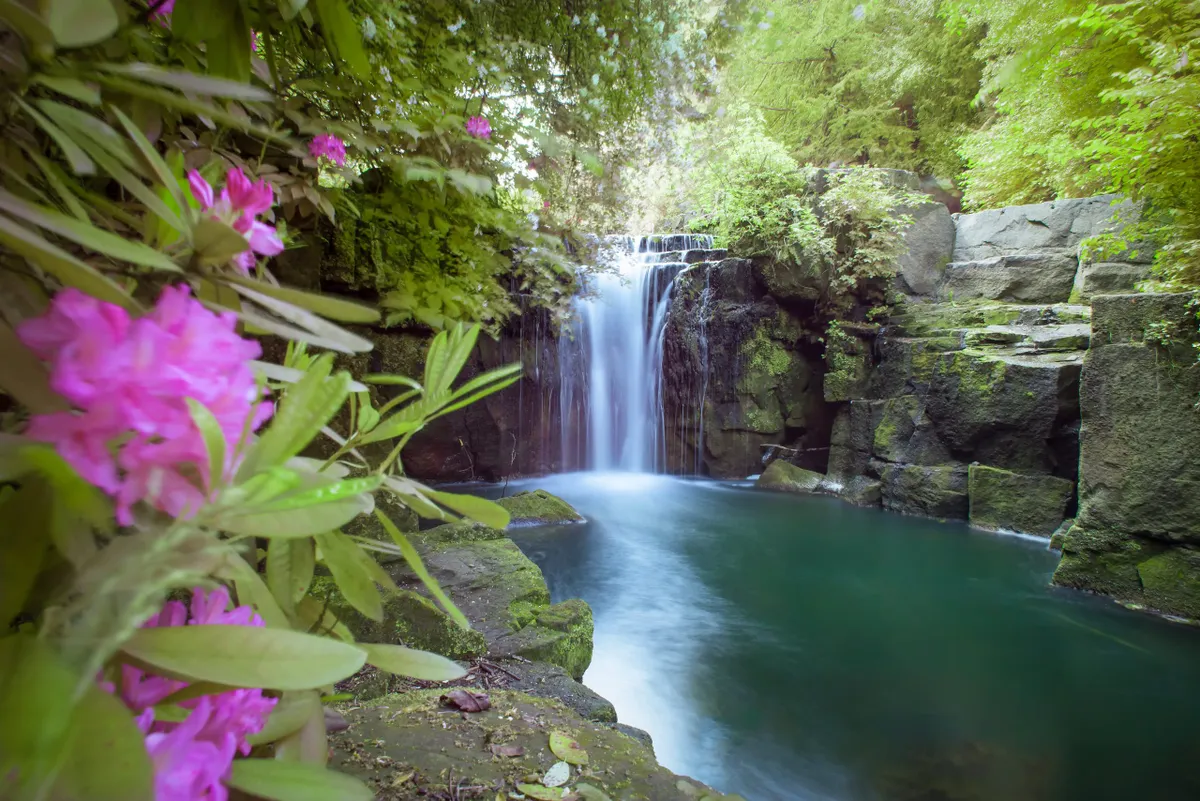
Tumbling down from the north of Newcastle, the Ouseburn river rises most magnificently as it passes through Jesmond Dene on its six-mile journey from Callerton to the city centre.
The Ouseburn is a glacial stream that cut south to the Tyne as the last ice age melted away (‘dene’ is a regional term for a ravine). Here, there is an astonishingly rural, peaceful rhythm for somewhere so close to the city. Microclimates sprout up here and there; dense, mature rhododendrons and rhubarb-like gunnera transform damp groves into an experience of walking through a gloomy jungle. Meanwhile, mosses and ferns take advantage of every crack and cranny.
Take a virtual tour of Jesmond Dene:
River Wharfe, North Yorkshire
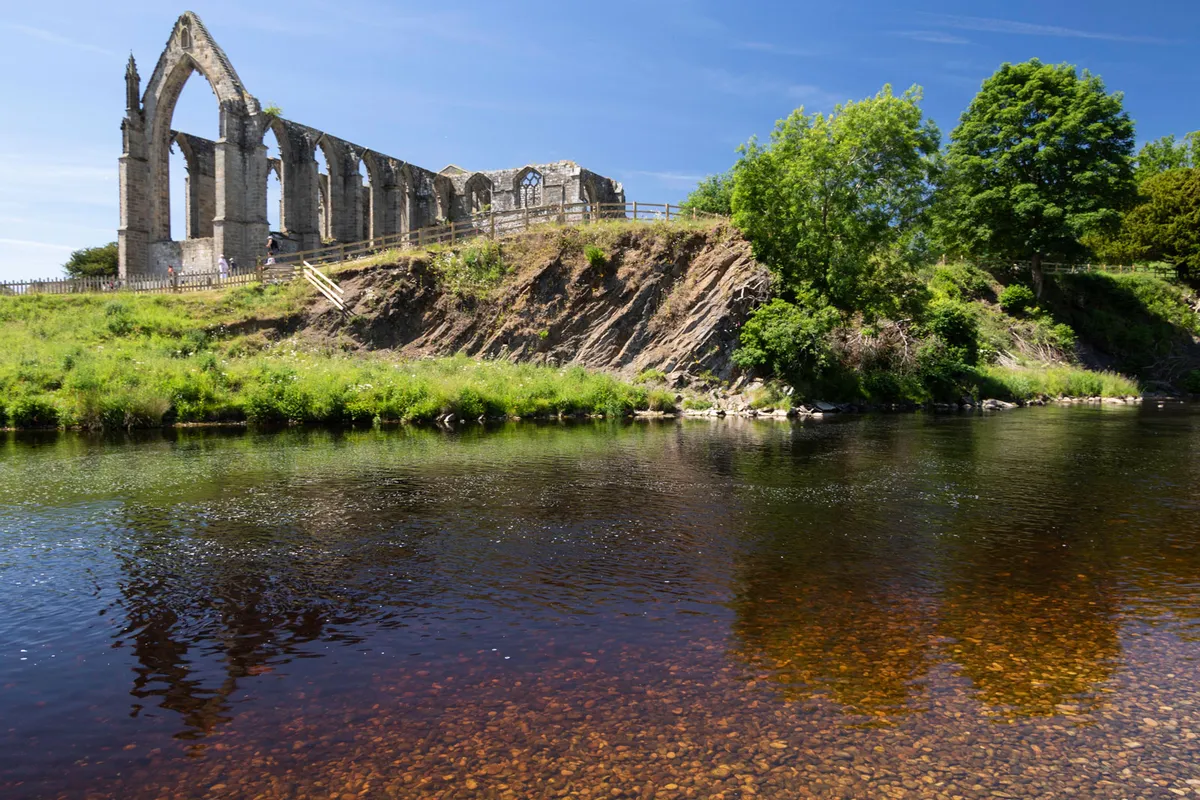
The River Wharfe is a waterway of great contrasts and beauty, rising high up in the hills that separate Dentdale from Wharfedale as a busy little steam, burbling over a series of flat limestone ledges. It’s an area of peace and quiet and a good spot to sit and watch dippers diving for insect larvae.
Hemmed in by hills, the river flows through Langstrothdale, past the villages of Yockenwaite and Hubberholme and into Wharfedale. Although broader and calmer than it is further upstream, the Wharfe still has its dramatic moments, such as the surging waterfalls at Linton. The surrounding scenery is just as special: hills topped by the pale outlines of limestone escarpments; picturesque Kettlewell and Grassington that seem to epitomise rural peace; and vast areas of flanking moorland dotted with the remains of a once-thriving lead mining industry. The river itself is unpolluted and famous for its brown trout.
As the water flows to the east, the countryside changes. The limestone-topped hills are replaced by the dark lines of gritstone, marking the edge of Ilkley Moor and Otley Chevin. The river turns north to Wetherby then south again to reach the brewery town of Tadcaster, before eventually flowing into the River Ouse.
River Garry, Perthshire
In Gaelic, the Pass of Killiecrankie – Coille Chneagaidh – translates to ‘wood of shimmering aspen’. It’s an appropriate name, especially in spring and summer when the trees are bathed in warm light.
Spotted flycatchers and wood warblers skip across the rocks, and, at dusk, pipistrelle and Daubenton’s bats throw shadows through the fading light. Hidden beneath the full tree canopies, subtler notes of the forest shine: a huddle of toadstools clinging to the buttressed roots of an old oak; a drilling woodpecker, and a red squirrel on the hunt for nuts and seeds flowing through the forest’s rafters like a cinder from the fire.
Find out more about Scotland's red squirrels:
Water of Nevis, Highland
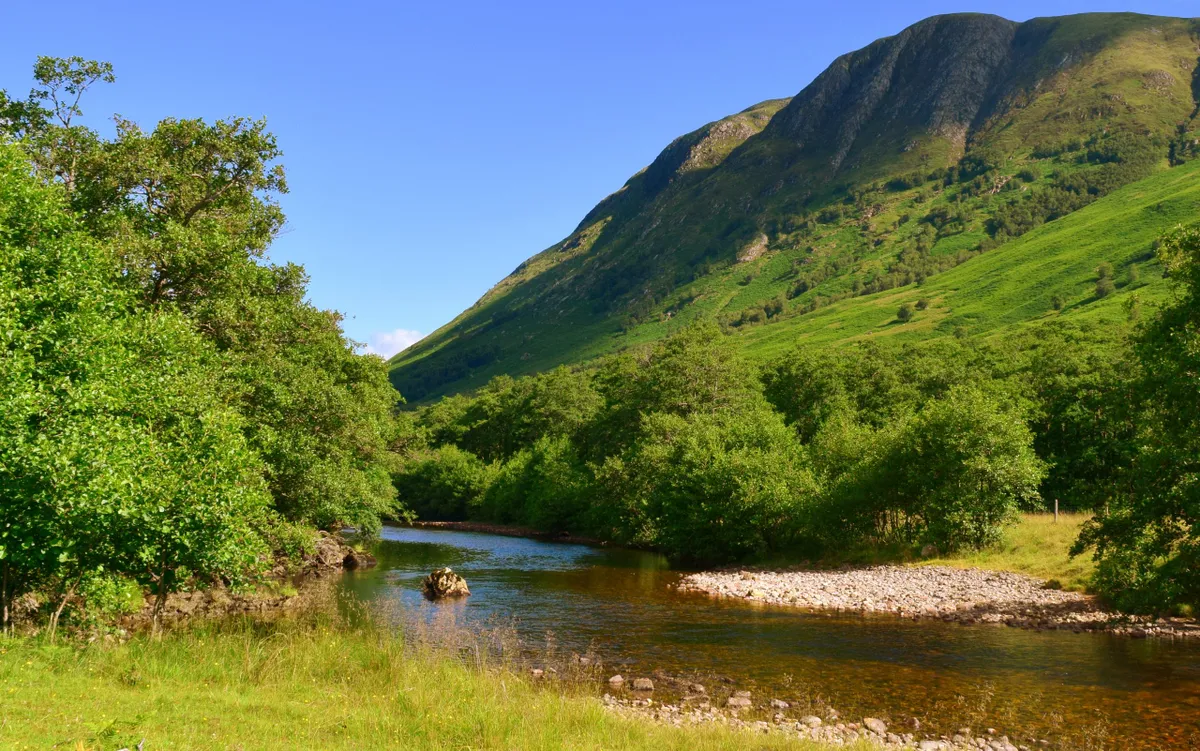
Tapering south from the Highland town of Fort William, gorgeous Glen Nevis is bounded by several high, rugged mountains, including the huge bulk of Ben Nevis, which, at 1,344m (4,409ft) above sea level, is the highest point in the British Isles.
The gorge itself is cared for by the John Muir Trust where ancient woodland, including gorgeous stands of alder, ash, birch, elm, aspen and Scots pine cloak its slopes. This lush forest, verdant green during spring, is home to the likes of willow warblers, finches and tree pipits.
Below, the roaring waters of the River Nevis slice through the gorge, with white waterfalls tumbling over rock that has been smoothed and eroded into some amazing shapes over many millennia.
However it is the magnificent An Steall (also known as Steal Falls or The White Spout) that really dominates the landscape. This thunderous waterfall (Britain’s second highest) plummets 120m from the slopes of An Gearanach into the river and is spectacular in its scale and force.
Enjoy a drone flight up the Water of Nevis to Steall Falls:
Afon Ystwyth, Ceredigion
Appropriately, Ystwyth means ‘supple’ in English. The river’s shifting currents braid the silvery sands and its course changes often, never quite the same as when last seen. In spate, its levels fluctuate dramatically, and plants such as alpine pennycress take root and then vanish.
From its boggy source in the Cambrian Mountains to Aberystwyth, where it slips quietly into the Rheidol river, Afon Ystwyth is a secretive stream. It moves west from molinia-choked uplands through gorges, forests, mining villages and the Hafod Estate, following the rocky escarpment of the Ystwyth fault line.
The Ystwyth is still quiet and remote. The roads are still narrow, the buses circuitous, the mines derelict and the villages depopulated. But peregrines and meadow pipits inhabit the Cambrian Mountains. Trees mantle the hills and secretive animals – including, recently, pine martens – roam in the bosky expanse.
Around Pontrhydygroes, hills soar high on either side from a beach of metallic sand, pine-clad and scarred and scored by adits, spoil-tips and leats (waterways). Bronze light brands the sky. Suddenly it resembled an Alaskan wilderness, not dark but light.
Find out how the Vincent Wildlife Trust are trying to help pine martens return to this secret valley:
Water of Leith, Edinburgh
Daffodils burst with colour under birch and alder catkins by the peaceful banks of the Water of Leith. This small but powerful river flows from the Pentland Hills above Edinburgh, down through woods peppered with old mills and historic villages, then on through the city.
Robert Louis Stevenson noticed “the smell of water rising from all round”; the novelist and travel writer used to visit his grandfather at the manse in nearby Colinton.
The waterside woods are dotted with snowdrops in spring, while in the river, 11 species of fish, including salmon, sea trout, brown trout and lamprey, provide good feeding for resident otters; dusk and pre-dawn are the best times to spot these elusive creatures.
Dip beneath the surface with Jack Perks' incredible brown trout footage:
